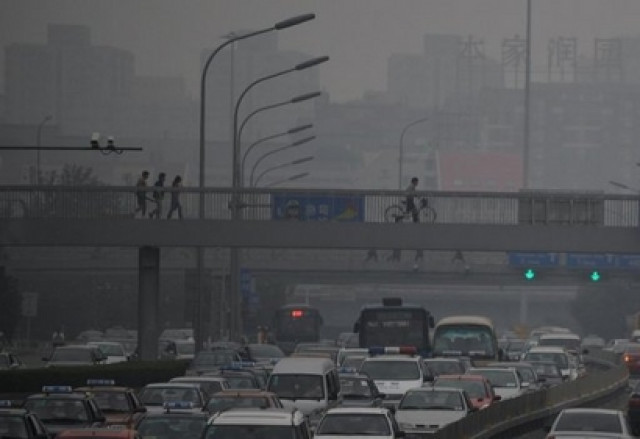Lahore rated second most polluted in world
PMD says air pollution to last due to little chance of rain

Once again, the provincial capital has been ranked as the second most atmospherically-polluted city of the world as the US Air Quality Index (AQI) highlighted a dismal score of 247 on Monday.
Global air monitoring agency IQ Air’s live monitors show that Lahore is only preceded by Delhi (308 US AQI score).
The meter also points out the fact that the air quality of the provincial capital is the worst in the country whereas Rawalpindi, Islamabad, Muridke, Raiwind and Karachi assume other top five spots with regard to air pollution in the country.
Data shows that Lahore Cantonment, DHA, Bedian Road are the most air polluted areas of the city.
Experts blame the change in weather for the aggravated air pollution in the city of gardens and underline no reprieve for at least a week as per latest forecast.
Speaking to The Express Tribune, an official of the Pakistan Metrological Department (PMD) said there is hardly any chance of rains.
“The citizens should use facemasks and avoid unnecessary outdoor activities to protect themselves from the harmful effects of smog and unhealthy air.”
During an ongoing antismog drive, the Punjab Environment Department lodged 25 FIRs in a week against old brick kiln owners for defying the operation ban.
In a recent media interaction, Assistant Director Environment Nauman Younas warned of action against brick kiln owners who fail to adopt the latest zigzag technology.
The air pollution levels are monitored through the level of PM2.5 in cities. On Monday, Lahore recorded PM2.5 concentration of 197 µg/m³.
PM2.5 refers to atmospheric particulate matter that has a diameter of less than 2.5 micrometres (about 3% human hair diameter). Since these particles are small they remain suspended in air, causing pollution over a longer period of time compared to bigger particles.
Owing to their minute size, particles smaller than 2.5 micrometres are also able to bypass the nose and throat and penetrate deep into the lungs and some may even enter the circulatory system of humans. They are also known to trigger heart attack or worsen chronic diseases such as asthma and bronchitis.
Published in The Express Tribune, February 9th, 2021.



















COMMENTS
Comments are moderated and generally will be posted if they are on-topic and not abusive.
For more information, please see our Comments FAQ